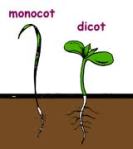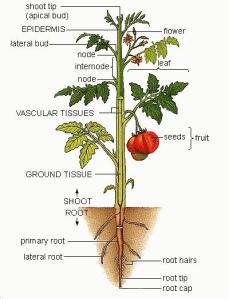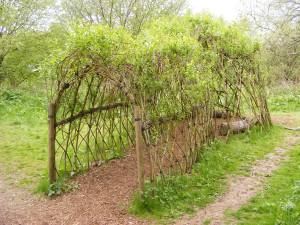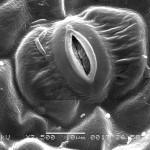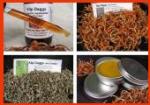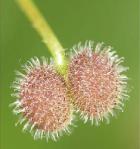“Beauty and seduction, I believe, is nature’s tool for survival, because we will protect what we fall in love with.”– Louie Schwartzberg, from The Hidden Beauty of Pollination
 After I posted the first part of the “The flower in three parts” my current essay series, I received an email from someone who said “The Flower in three parts, sounds like a symphony”. Yes, I said, that is the energy I have been trying to convey to others that botany, plants, native plants, flowers are all part of a symphony of life. Each part of the flower and its growth processes are important to the whole. The first part or movement was to turn your attention to this fantastic creation sitting at the end of a stem. I hoped to raise your curiosity. I tried to flood your senses with wonder at the design and substance of flowers. It was a slow movement encumbered by way too much vocabulary but necessary if you are to truly meet the flower in all its wonder.
After I posted the first part of the “The flower in three parts” my current essay series, I received an email from someone who said “The Flower in three parts, sounds like a symphony”. Yes, I said, that is the energy I have been trying to convey to others that botany, plants, native plants, flowers are all part of a symphony of life. Each part of the flower and its growth processes are important to the whole. The first part or movement was to turn your attention to this fantastic creation sitting at the end of a stem. I hoped to raise your curiosity. I tried to flood your senses with wonder at the design and substance of flowers. It was a slow movement encumbered by way too much vocabulary but necessary if you are to truly meet the flower in all its wonder.
I have been drawing you into the allegro or opening sonata in order to capture your attention for the second movement the main allegro or scherzo: The pollination cycle or sex life of flowers. And finally in The Flower – part 3: “The Flower as Healer”, I will end with one of the strongest connections between humans and flowers: they heal us – the finale – we are flowers ourselves. We are they and they are us. What we do to the flower, we do to ourselves. If we kill off the pollinators and clear-cut the plant kingdom, so goes all Eden, of which we are a part.
But now for Part 2: Pollination and The Sex Life of Flowers
The name of the second part “The sex life of Flowers” came from my research on flowers and their ways and means of pollination. While researching I
discovered a scientist named Bastiaan Jacob Dirk Meeuse. He was a naturalist and botanist who was a professor at the University of Washington. He lived from 1916 to 1999. Meeuse was a prolific researcher whose five decades of research on the exotic but stinky voodoo lily resulted in numerous contributions to science. Dr. Meeuse was an authority on pollination, especially by insects and birds, and wrote the textbook ”The Story of Pollination” (1961).
In the 1980’s his research contributed to a well-known public television documentary called “Sexual Encounters of the Floral Kind” (1983). I have links to segments of the documentary in end of this essay. In 1984 Meeuse co-authored a book along with Sean Morris called “The Sex Life of Flowers”.
Meeuse was a botanist attracted by the exotic, he unlocked the secrets of the voodoo lily (Sauromatum guttatum) a relative of the corpse flower (Amorphophallus titanum). The voodoo lily has a very strong smell and generates much heat, up to 108 degrees when it ready for pollination. When it flowers, perhaps once a year, its fleshy purple spike emits waves of heat and an odor not unlike that of rotting meat. The chemicals released by the heat apparently helped to attract pollinators. (see picture).
Meeuse, along with his research team documented the flower cycle and the important relationship between pollinators and flowers. Meeuse and Morris found innumerable examples of mimicry in which the flower part has evolved to resemble a female bee. The male, trying unsuccessfully to mate with the flower, unwittingly collects and spreads the orchid’s pollen.
Here are a few facts about mimcry in pollination: When the male wasp tries to mate with the dummy female, he fails, but the orchid succeeds in getting pollen on the wasp. He flies away, only to be fooled again by another orchid pulling the same trick. In the process, the wasp transfers pollen from flower to flower. Plants that are farther away from each other are more likely to be distant relatives, so mimicry may reduce inbreeding. Posing as a sexual suitor may be a strategy that allows the geographic spread of plants over a wide area — generally, insects will travel further to find a mate than to find a meal.
Here is a link to the BBC documentary using some of Meeuse’s research:Wild Orchid and wasp mimicry – http://www.youtube.com/watch?v=-h8I3cqpgnA
Another important aspect of Meeuse’s research was to show that flowers develop MANY paths to pollination. Flowers can be asexual (agamogenesis), hermaphrodites, only male or only female. And then there are the combinations. The only way to learn about a plant and its lovely flower is to sit with it, study it. Learn its entire life path. You just can’t make any broad statements about how flower reproduction takes place.
THE FERTILIZATION PATHWAY OF THE ZUCCINI SQUASH
Let’s look at the squash plant: A Zucchini squash plant has both male and female flowers. Male flowers usually appear first and have a thin stem. Female flowers appear later and have a small, baby zucchini developing between the base of the flower and the vine. The male flower will usually open in the early morning, attract a certain type of early morning foraging insect, then can die away by the late afternoon. The female flower will open later in the day and again attracts the same pollinating bee or insect and is fertilized by the pollen it is carrying. If the small squash rots away then it has not been fertilized. This can show a lack of garden pollinators. Hand pollination may be the only way to have a good crop of squash.
There is a very fragile dance going on here. If there are no pollinator bees or other insects, our food will disappear. On most flowering plants there is only one short time frame in which a flower can be pollinated and if the conditions are just right or there are not enough pollinators available, no fertilization can happen. As in many processes in nature, timing is important. The female reproductive part of a flower is receptive to pollen only at certain times of the year. Creatures like insects and birds, which move from flower to flower in search of food, are a fast and often guaranteed way for plants to distribute their pollen.
Not all flowers need to be so cunning. Several angiosperm species including grasses bear inconspicuous blossoms – that use the wind for pollination.
Sometimes drought and disease can cause squash plants to only produce male flowers. Now this lack of fertilization can also be caused by severe weather change, or lack of fertilization in the soil types or pollution that causes mutations of plant or pollinator. Yes, the fragile dance is important to support.
PLANT CELLS AND THE MERISTEM-FLORAL
For the last few months I have been leading you on a journey from the root to the stem to the branch and now on to the flower. All the while following the adventures of the meristem cell. At the point of developing the flower, the meristem cell morphs into a meristem-floral cell and begins to produces cells that will become the structure of the flower.Plants produce 2 types of reproductive cells. The first is the spore – found on such plants as ferns. The second is formed during sexual reproduction – a process where a population is divided into male and female members or distinct male and female structures on individual plants. The DNA of the plant, stored in these specialized flower cells will begin to build the structures and organelles that will become the flower. Flowers give rise to fruit and seeds.
BASIC SEXUAL PARTS OF A FLOWER
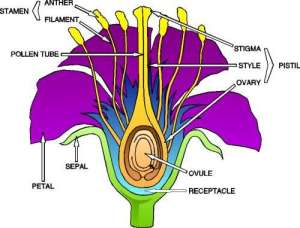 Flowers are short branches bearing specially adapted leaves, and reproduction is the sole function for which flowers evolved (Capon 2010). Both the male and the female reproductive parts of a plant are in the center of the flower. The male, pollen-producing part is called the anther, held aloft by a stalk called a filament. The entire male apparatus is called a stamen. Each pollen grain is unique to its species. The female reproductive part of a plant, the stigma, sits on top of a style, or stalk, which leads to an ovary at the base. The entire female plant mechanism is called a pistil. This is the illustration of a perfect flower having both female and male parts (some do).
Flowers are short branches bearing specially adapted leaves, and reproduction is the sole function for which flowers evolved (Capon 2010). Both the male and the female reproductive parts of a plant are in the center of the flower. The male, pollen-producing part is called the anther, held aloft by a stalk called a filament. The entire male apparatus is called a stamen. Each pollen grain is unique to its species. The female reproductive part of a plant, the stigma, sits on top of a style, or stalk, which leads to an ovary at the base. The entire female plant mechanism is called a pistil. This is the illustration of a perfect flower having both female and male parts (some do).
Flowers have figured out a way to do the amazing things they do while taking care of the place that will take care of their offspring. They are focused on having their genetic material here 10,000 years from now. Plants seduce pollinators with fragrance, hue, platform structure and a promise of sex with another of its own kind and ensure return visits with the promise of nectar.
Some flowers attract with scent, some with color. Most offer nectar as an enticement to visitors and as a way to ensure repeat visits. The chemical ecology of plants seeks not only to attract pollinators, but keep predators away. The complexity of floral odors mediate interactions between flowers and pollinators to guarantee reproductive success (Carde and Ring 2004).
Return business is particularly important for plants that encase many seeds in a single fruit—raspberries, for instance, or melons. A poorly pollinated raspberry will have many shrunken, dry drupelets. A melon blossom that doesn’t attract enough pollinators may produce a melon that is small, lopsided, and not very sweet.
A few varieties of plants have adapted the shape of their flowers to favor certain pollinators—tubular blossoms attract hummingbirds, for instance, but the nectar is often inaccessible to bees.
Other plants aren’t choosy. They’ll do business with birds and bees, and also with wasps, beetles, rodents, and even humans if that’s what it takes to move the pollen.Many flowers have a distinctive bull’s-eye color pattern or a throat of a different shade from the outside petals, to help insects and birds find the payload of pollen.
Plant structures, too, are designed to attract specific pollinating partners. The Queen Anne’s lace flower places its nectar right at the base of its tiny flowers where pollinators with a short proboscis (nectar-gathering appendage) such as honeybees, ants, wasps, flies, and beetles can reach it when they crawl on the flower. On the other hand, bumblebees, butterflies, and moths have long proboscises, which enable them to reach nectar in less accessible places. For example, the long shape and curve of the columbine flower complements the long tongue of a bee, butterfly, or hummingbird. By concealing the nectar deep within its trumpet-like blossoms, the columbine prevents animals who are not its pollination partners from taking the nectar and transferring any pollen.
WHY ARE HUMANS ATTRACTED TO FLOWERS?
Are humans also pollinators? Michael Pollan, author of “Botany of Desire” writes in his 2002 article called “Border Whores” that some evolutionary psychologists have proposed an interesting answer. Their hypothesis goes like this: our brains developed under the pressure of natural selection to make us good foragers, which is how humans have spent 99 per cent of their time on Earth. The presence of flowers is a reliable predictor of future food. People who were drawn to flowers, and who, further, could distinguish among them, would be much more successful foragers than people who were blind to their significance. In time the moment of recognition—much like the quickening one feels whenever an object of desire is spotted in the landscape—would become pleasurable, and the signifying thing a thing of beauty.
Humans have danced with the flowers, written poetry, songs and spent endless hours nurturing their flower gardens. The flower is etched into our psyche- we are changed by the floral scents, the structure and the nectar. Humans have used flowers for food and medicine for thousands if not millions of years. It has only been recently that we have become “plant and flower blind. It has only been in the last 100 years that we have begun to call certain flowers “weeds” and have conducted a chemical warfare on our beloved inspirers.
We humans have lost the ability to love the plants and their flowers. We cannot see the connection between life on earth and the need to pave over paradise. We need to grow and protect fertility. In ensemble that is what ecosystems do, it creates more and more opportunity for life. We need to create conditions conducive to life the same way flowers and plants do. Ban all the dangerous chemicals and stop making war on the natural world. We need to make peace with the flowers and the plants and all species. Namaste.
CASCADIAN NATIVE PLANTS THAT YOU SHOULD KNOW ABOUT
Matthew Shepherd of the Xerces Society reports that there are approximately 900 species of bees and approximately 200 species of butterflies in the Cascadian bioregion. Native plants are the forage of choice by these pollinators. Some native plants attract a great many pollinators. Cascading plants such as Pacific Ninebark (Physocarpus capitatus), White Spirea (Spiraeabetulifolia), and Ocean Spray (Holodiscus discolor) could be attracting hundreds of types of pollinators. They often grow near wetlands, stream banks and moist forest lands. They should be included in all landscaping projects where ever possible. These essential native plants will bring wildlife into any garden or natural area and guarantee the pollination for many flowers.
Another extremely important indigenous plant is the Willow. The Willow species are the basis of a vital food web for insects, birds, small mammals, larger animals; many soil organisms, bacteria and fungi. They are a very important habitat. In particular Apis mellifera, (the honey bee) an insect belonging to the Hymenoptera Order use the early blooming Willow flowers (catkins) to survive long wet, cold springs. These insects are not damaging to the willow leaves or flowers, but are feeding on nectar and are helping to pollinate other early blooming plants (Aliner 1992).
The flowers of the Willow are inflorescences, taking the form of catkins, which develop in a familiar way, through the loss of the bud scale and the revelation of the silky hairs of the ‘Pussy Willow’. Eventually, however, the anthers surmount the filaments of the stamens and reveal a vivid display of pollen from pale yellow through gold to shades of red and purple depending on the species.
BEE COLONY COLLAPSE – A CANARY IN THE MIND SHAFT?
And finally I leave you with this little video called “The Beauty of Pollination”. The speaker is director and producer Louie Schwartzberg. He is presenting his work as part of the TED TALKS. His deep concern for the present bee colony collapse that is decimating pollinators worldwide caused him to take all his film making skills and present a dire message to the world. “The destruction of the bee is like a canary in the coal mine- once the bees are gone, then the flowers will disappear. Once the flowers are gone – then we will be gone.” You cannot truly love the flowers if you do not love the pollinators. Feast your eyes on this TED TALK on
The Hidden Beauty of Pollination:
VOCABULARY
- Anther: The anther is part of the stamen and produces the pollen.
- Articulation: Another term for articulation is internode. Articulation describes the space between two nodes (joints).
- Calyx: The whorl of sepals on the outside of a flower is referred to as the calyx.
- Corolla: The whorl of petals is called the corolla.
- Filament: The filament provides support for the anther in the stamen.
- Floral Axis: The floral axis is the stem holding the reproductive flower parts.
- Microsporangium: The microsprangium is located in the anther and produces microspores, which become male gametophytes. These male gametophytes will later be used in forming the pollen grains.
- Nectary: The nectary produces nectar, a sweet liquid that attracts insects and birds for feeding. As they drink the nectar, the nearby pollen sticks to them and is transported to other flowers.
- Ovary: The ovary houses the ovules and will become the fruit after pollination.
- Ovule: The ovules contain egg cells and become the seeds after pollination.
- Pedicel:The pedicel is the flower stalk.
- Perianth: The perianth is the collective term for the calyx and corolla.
- Petal: The petal is designed to attract pollinators to the flower and protect the stamen and pistil. Many have patterns that can be seen in ultraviolet light by bees and other insects. These indicate where the nectar is located.
- Pistil: The pistil is the female reproductive part in the flower. It includes the ovary, style, and stigma.
- Sepal: Sepals are found on the outside of the flower in a whorl. They are usually green. The group of sepals is called the calyx.
- Stamen: The stamen is the male reproductive organ in the plant. It consists of the anther and filament.
- Stigma: The stigma is the sticky surface where pollen lands and is collected to fertilize the ovules.
- Style: The style is part of the pistil and holds the stigma above the ovary.
REFERENCES
Ailner, J. Edward (1992) The Tree Book Collins and Brown Ltd
Capon, Brian (2010) Botany for Gardeners, 3rd edition, Timber Press, Portland, Oregon
Carde, Ring T. and Millar, Jocelyn G: Editors (2004) Advances in Insect Chemical Ecology – Cambridge University Press
Elpel, Thomas J. (2006) 5th Edition, Botany in a day. The Patterns Method of Plant Identification, Hops Press LLC, Pony, Montana
Meeuse, Bastiaan and Morris, Sean ( 1984) The Sex Life of Flowers Faber & Faber, London.Meesue, B J D (1961) The Story of Pollination, Ronald Press, New York, NY
Meeuse, Bastiaan contributior – Documentary “Sexual Encounters of the Floral Kind” part one: http://www.youtube.com/watch?v=1Qi7Pnth_t8
Pollan, Michael (2002) Border Whores, The Times London, March 9, 2002 Viewed on the internet May 18, 2012 http://michaelpollan.com/articles-archive/border-whores/
Shepherd, Matthew (2012) Xerces Society, Portland, Oregon http://www.xerces.org/ from a private email on 5-18-2012
Shepherd, Matthew, et al. Pacific Northwest Plants for Native Bees, Xerces Society, The invertebrate Conservation, viewed on the web on 5-12-2012 http://www.xerces.org/wp-content/uploads/2010/01/pacificnw-plants-for-bees-xerces3.pdf
Weiss, M. 1991. Floral colour changes as cues for pollinators. Nature 354:227-229.
WEB RESOURCES
Websites:
- The sexual encounter of the floral kind. A 12 part series produced by public television and based on the research of Bastiaan Meeuse. Part 1 -Video on how flowers attract pollinators. The male wasp and the flower.
http://www.youtube.com/watch?v=Hv4n85-SqxQ&feature=relmfu
- North American Pollinator Protection Campaign – The best website available for resources on pollination, projects for classrooms, organizations affiliated with the Pollination Protection Campaign and more. Detailed lesson plans for in the classroom with teacher guides and student guides available for printing directly off website. Availability to order posters and materials for the classroom. http://www.nappc.org/
- Conservatory of Flowers: Golden Gate Park – limited information on the details of pollination and its mechanisms. Excellent website for descriptions of pollinators and their roles in nature. Teachers resource Guide. http://www.conservatoryofflowers.org/education/butterfly_condensed.htm
- Wikipedia – Flowering plants – http://en.wikipedia.org/wiki/Flowering_plant Viewed on the internet on 4-28-2012
- Xerces Society –The invertebrate Conservation organization located in Portland, Oregon. A very valuable organization and website. Lots of resources and education material. – http://www.xerces.org/
Next time: The Flower: Part 3 – The Flower as healer

















